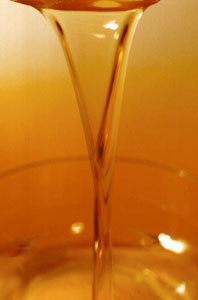Fats, just like protein or carbohydrates, are essential and your body needs fat to function properly. However, too much fat can have detrimental effects on your body, initially being weight gain and could result in heart problems or cancer.
 Fat serves numerous roles in the body:
Fat serves numerous roles in the body:
– an energy source
– used in production of cell membranes
– helps hormone-like compounds regulate blood pressure, heart rate, etc.
– carries fat-soluble vitamins (Vit. A, K, E, & D) from your food into your body
Most foods contain several different kinds of fats, including saturated, polyunsaturated, monounsaturated and trans fats, and some are better for your health than others. Don’t completely eliminate all fats; rather, choose the healthier types and eat them in moderation.
Let’s break them down!
When choosing fats, your best options are unsaturated fats: monounsaturated and polyunsaturated fats. Replacing your unhealthy fats with the healthy ones you could see results like reducing your risk of heart disease and reducing your total and LDL-cholesterol.
Healthy Fats
Monounsaturated fat (MUFA)
– Liquid at room temperature, but solidify in the refrigerator
– Good sources include: olive, peanut and canola oils, avocados and most nuts
Polyunsaturated Fat (PUFA)
– Liquid at room temperature and in the refrigerator
– Good sources include: vegetable oils, such as safflower, corn, sunflower, soy and cottonseed oils
The not-so-healthy fats include:
Saturated fat and trans fat… try to avoid these as much as you can!
– Sources of saturated fat: butter, meat, chocolate, dairy like cream and cheese, coconut oil and cottonseed oil
– You’ll know a trans fat when you see “partially hydrogenated oil” on an ingredients list, and it should be called out on the nutrition facts label.
 MUFAs have gotten a lot of attention and lately it’s been over the “Flat Belly Diet.” This fad diet entails eating four, 400-calorie meals a day, buying and living by a book, subscribing to a monthly program, paying for online access, and you don’t have to exercise to lose the weight! The authors of the book/diet claim that by eating four, 400-calorie meals a day and including a MUFA at each meal you will lose weight, mainly slimming down your belly! OK, so how they were able to conclude this stomach slimming idea is unclear. If we were able to pinpoint exactly where our weight loss will occur then all of us women would have the desired curvy figure, including good bust size, tight bottom, and slim flat belly. I wish it were true, but its not; there is no way to pinpoint exactly where you will lose weight. Also this diet focusing on MUFAs is no new thing. Food sources for MUFAs include olive and canola oil, nuts, and avocado… same components to the well-known Mediterranean Diet.
MUFAs have gotten a lot of attention and lately it’s been over the “Flat Belly Diet.” This fad diet entails eating four, 400-calorie meals a day, buying and living by a book, subscribing to a monthly program, paying for online access, and you don’t have to exercise to lose the weight! The authors of the book/diet claim that by eating four, 400-calorie meals a day and including a MUFA at each meal you will lose weight, mainly slimming down your belly! OK, so how they were able to conclude this stomach slimming idea is unclear. If we were able to pinpoint exactly where our weight loss will occur then all of us women would have the desired curvy figure, including good bust size, tight bottom, and slim flat belly. I wish it were true, but its not; there is no way to pinpoint exactly where you will lose weight. Also this diet focusing on MUFAs is no new thing. Food sources for MUFAs include olive and canola oil, nuts, and avocado… same components to the well-known Mediterranean Diet.
Nutritionist and physicians have always suggested limiting saturated and trans fat and eating MUFAs in their place, but through the magic of marketing (“MUFAs will slim your belly”) MUFAs have a new life/twist. Any weight lost from this diet will be reflected through the calorie restriction (1600calories/day). Any time a diet claims that one food or food source will cure your weight loss problems you are being hooked into a fad diet… steer clear of them because the results never last!
